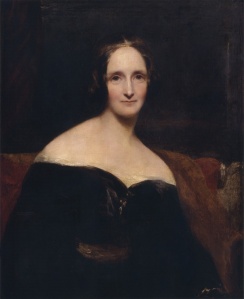Mary Shelley, the celebrated author of Frankenstein, needs little introduction, whereas her friend Margaret Mason may be less familiar.
Born into a wealthy Anglo-Irish family in 1773, Margaret King, as she was then called, spent her childhood years in the neo-Gothic surroundings of Mitchelstown Castle in County Cork.

Fate would set her on the path towards friendship with two of the most famous female authors of her era when a new governess-companion arrived at the castle in 1786.
Mary Wollstonecraft, then in her late twenties, was yet to embark on her illustrious career as an author. She was an instant hit with her teenage pupil, but frictions soon developed between the free-thinking English woman and her young charge’s aristocratic mother.

Unable to hide her disdain for Lady Kingsborough, Wollstonecraft found herself dismissed within the year, but she would leave a lasting impression on her former student. Over the decade that followed – a period during which Wollstonecraft’s radical writings, including most famously A Vindication of the Rights of Woman, were causing a stir – the two remained friendly.
Even after Wollstonecraft’s early death in 1797, following complications during the birth of her daughter Mary, Lady Mountcashell – as King had become on marriage – would remain an occasional visitor to the home of Wollstonecraft’s widower, the philosopher William Godwin.
She was one of the authors who contributed to his ambitious Juvenile Library book series, tellingly adopting the nom de plume Mrs Mason, after the kindly teacher heroine of Wollstonecraft’s Original Stories from Real Life, her only work of children’s literature. Mason’s own books in Godwin’s series bear the influence of the practical, egalitarian teachings of the woman who was once her governess.

As a child, Mary Shelley must have regarded Mason chiefly as her father and late mother’s friend, but in later years she became close to her herself. That the two women should have bonded is perhaps unsurprising, since both – like Wollstonecraft before them – had a fierce unconventionality in common.
Despite Mason’s Anglo-Irish background, she played a part in the Irish rebellion of 1798; would don male dress some years later in order to study medicine (her six-foot figure allowing her to pass for a man); and, perhaps most scandalously of all, left her husband and eight children to elope to Italy with her Irish lover.
Interestingly, though, when Wollstonecraft’s daughter defied her father by fleeing abroad with the married Percy Bysshe Shelley in 1814, Mason was disapproving.
Following the suicide of Percy’s wife, Harriet, the Romantic poet was eventually able to marry Mary in 1816. Two years later, when the couple visited Mason’s home in Pisa, she introduced them to her social circles and helped them to set up a home in the city

When Shelley – by then the author of Frankenstein – went through a bout of serious depression following the deaths of her two children, Mason’s support and medical knowledge proved invaluable.
Relations between the two were not always rosy – Shelley, for instance, was saddened by Mason’s apparent coldness after the death of her poet husband – but the two still remained essentially on good terms. In fact, knowing of the widowed Shelley’s unhappiness, Mason counselled her friend to return to England and even supplied her with most of the funds to make the journey – a sum which Shelley could repay, she said, should she ‘ever grow rich’.
The pair continued to correspond by letter until Mason’s death in 1835. Though today Mason’s books are not well-known, she continues to be remembered for the fascinating personal link she provides between two of history’s most significant literary women.
Activity
Margaret Mason’s relationship with Mary Shelley changed significantly over the course of their lives, as Shelley matured from a girl into a woman. This month, we will each look back on a significant change that has affected our own friendship.

One thought on “Margaret Mason, Mary Shelley and Mary Wollstonecraft”